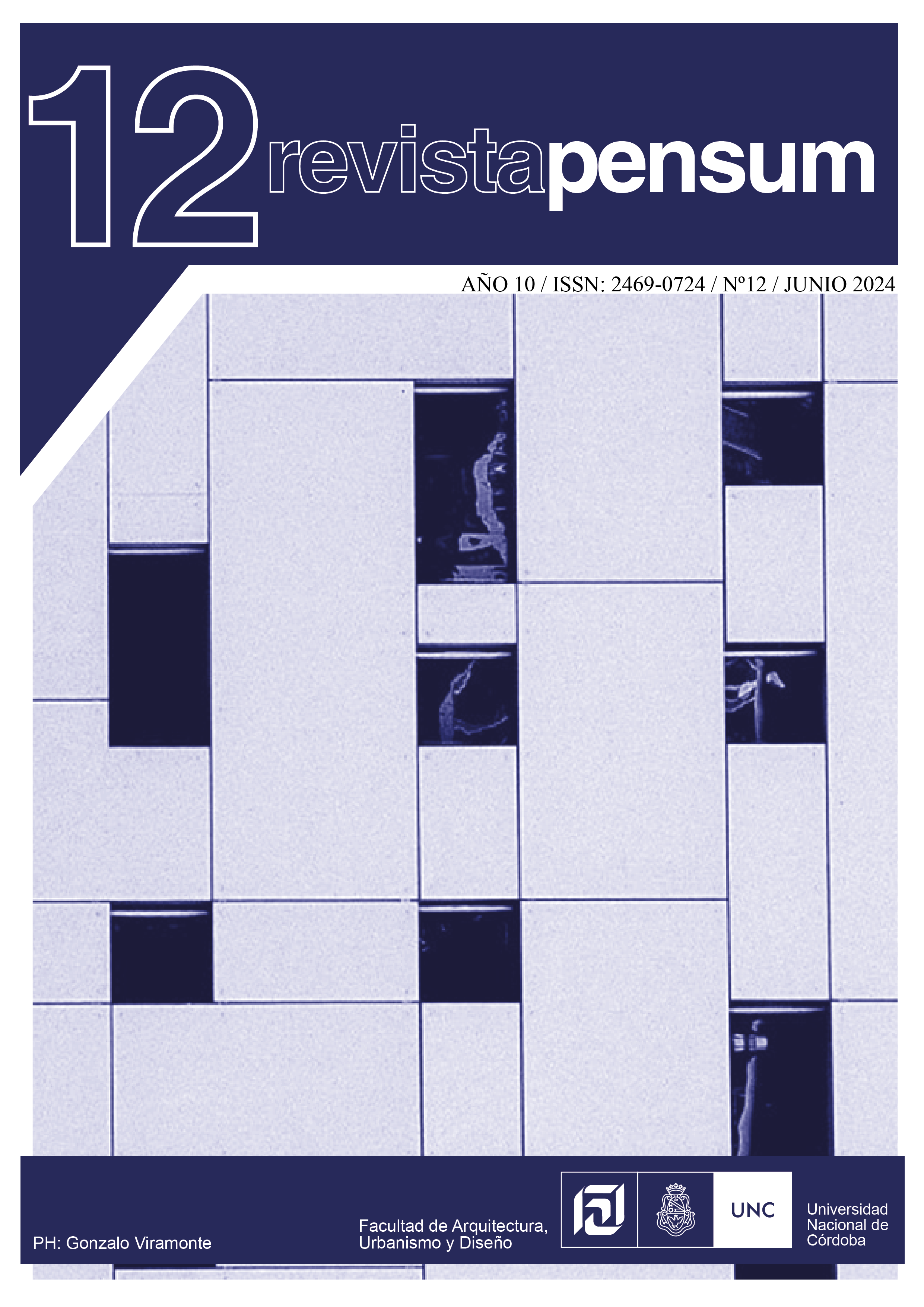Women daily mobility experiences and strategies in the face of inequality situations in Gran Resistencia and Gran Corrientes
DOI:
https://doi.org/10.59047/2469.0724.v10.n12.44099Keywords:
Mobility, City, Women, FearAbstract
This work analyzes the mobility conditions faced by women who live in the Metropolitan Area of Gran Resistencia and Gran Corrientes (AMGR-GC) and carry out their daily lives activities mainly in the central area of Resistencia (ACR). In this territory, mobility is conditioned by territorial inequalities, deficits in the road network and in public transport services (PT). In the case of women their mobility is also affected by other specific conditions, such as certain forms of violence and gender inequalities that arise in public spaces, which they must overcome in their daily trips as a necessary step to carry out their work, study, care and leisure activities. Based on results obtained from interviews and focus groups with women between 20 and 58 years old, we offer a characterization of their mobility experiences and the strategies they develop to overcome the difficulties and risks they face in public spaces.
References
Alcalá y Scornik, M. (2015) Movilidad y accesibilidad en el Gran Resistencia. Principales problemas y desafíos. Transporte y Territorio RTT (13), 8-35. http://revistascientificas.filo.uba.ar/index.php/rtt/article/view/1875
Amar, G. (2011) Homo mobilis. La nueva era de la movilidad. La Crujía
Agencia Nacional de Seguridad Vial (2019), Anuario Estadístico de Seguridad Vial Año 2019. https://www.argentina.gob.ar/sites/default/files/2018/12/ansv_ov_anuario_estadistico_2019_final.pdf
Cámara de Fabricantes de Motovehículos (2023), Patentamientos motovehículos (2014-2023). https://www.cafam.org.ar/secciones.php?m=11
Caldeira, T. (2000) Cidade de Muros. Editora 34
Delgado, M. (2007) Sociedades movedizas. Pasos hacia una antropología de las calles. Anagrama.
Gutiérrez, A. (2012), ¿Qué es la movilidad? Elementos para (re) construir las definiciones básicas del campo del transporte. Bitácora Urbano Territorial, 21(3), 61-74
Gutiérrez, A y Pereyra, L. (2018, 23 al 26 de julio) ¿Patrón de género? Un análisis comparado de la movilidad cotidiana en ciudades argentinas. [Ponencia]. XX Congreso Latinoamericano de Transporte Público y Urbano Innovando para repensar en el transporte urbano, Medellín, Colombia. https://camilonemo.com/assets/images/research/dataVisualization/plataformaGestionTransito/LibroCLATPU2018.pdf
Gutiérrez, A. y Pereyra, L. (2019), La movilidad cotidiana en ciudades argentinas: Un análisis comparado con enfoque de género. Lavboratorio (29), 143-166. Universidad de Buenos Aires, Facultad de Ciencias Sociales. Instituto de Investigaciones Gino Germani. https://publicaciones.sociales.uba.ar/index.php/lavboratorio/article/view/5126
Jacobs, J. (2015) Muerte y vida de las grandes ciudades. Capitan Swing. 5ta Ed.
Jirón, P. (2017) Planificación urbana y del transporte a partir de relaciones de interdependencia y movilidad del cuidado. En ¿Quién cuida en la ciudad? Aportes para políticas urbanas de igualdad. Comisión Económica para América Latina y el Caribe 405-432 https://repositorio.cepal.org/handle/11362/42424
Jirón, P. y Zunino, D. (2017) Movilidad Urbana y Género: experiencias latinoamericanas. Transporte y Territorio RTT (16), 1-8
Kessler, G. (2009) El sentimiento de inseguridad. Sociología del temor al delito. Siglo XXI.
Lefebvre, H. (2013) La producción del espacio. Capitán Swing.
Lefebvre, H. (2017) El derecho a la ciudad. Capitán Swing.
Miralles-Guasch, C. (2002), Ciudad y transporte. El binomio imperfecto (1ra ed.). Ariel Geografía.
MuMaLá (2017) Violencia contra las mujeres en el espacio público. La inseguridad de la que nadie habla. [Informe].http://www.diariofemenino.com.ar/documentos/OBSERVATORIO-07.pdf
Naciones Unidas (2017), Nueva Agenda Urbana. Hábitat III. https://onuhabitat.org.mx/index.php/la-nueva-agenda-urbana-en-espanol
Preciado, B. (2014), Testo Yonqui. Sexo, drogas y biopolítica. Paidós.
Romero Machuca, M. (2021, 3 al 6 de septiembre) El transporte público en la Ciudad de Corrientes. Principales déficits y potencialidades. XI Encuentro de Geohistoria Regional - IIGHI. https://repositorio.unne.edu.ar/handle/123456789/50192?show=full
Sánchez de Madariaga, I. (2009), Vivienda, movilidad y urbanismo para la igualdad en la diversidad: ciudades, género y dependencia. Ciudad y territorio Estudios Territoriales, XLI (161-162), 581-597. https://recyt.fecyt.es/index.php/CyTET/article/view/75953
Suboticki, I. y otros, (2021). Transport and Mobility: A Social Sciences and Humanities annotated bibliography. Energy-SHIFTS.
Urry, J. (2002), Mobility and proximity. Sociology, 36 (2), 255- 274.
Urry (2005). Sociologie des mobilités: Une nouvelle frontière pour la sociologie? Armand Colin.
Downloads
Published
Issue
Section
License
Copyright (c) 2024 Laura Inés Alcala, Ezequiel Ledesma

This work is licensed under a Creative Commons Attribution-ShareAlike 4.0 International License.
Authors who publish in this journal agree to the following terms:
a. Authors retain copyright and guarantee to the journal the right to be the first publication of the work as well as licensed under a Creative Commons Attribution-ShareAlike 4 license.
b. Authors may separately establish additional agreements for non-exclusive distribution of the version of the work published in the journal (e.g., placing it in an institutional repository or publishing it in a book), with an acknowledgement of its initial publication in this journal.
c. Authors are permitted and encouraged to disseminate their work electronically (e.g., in institutional repositories or on their own website) before and during the submission process, as this may result in productive exchanges, as well as earlier and greater citation of published work (See The Effect of Open Access).
d. 4.0 International Creative Commons Attribution-ShareAlike 4.0 License.












